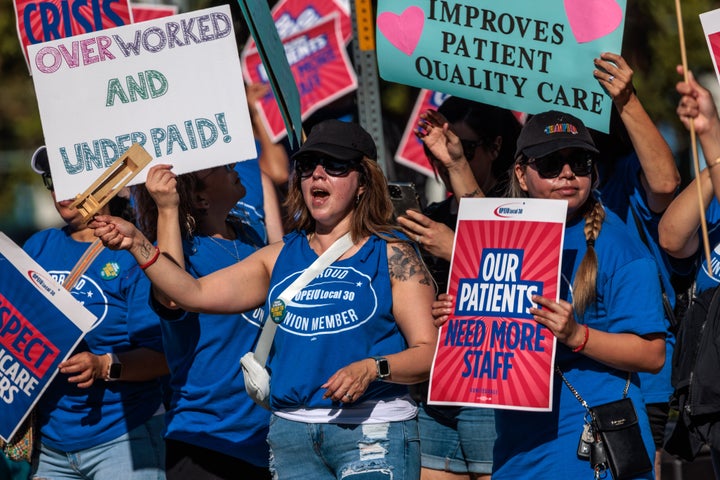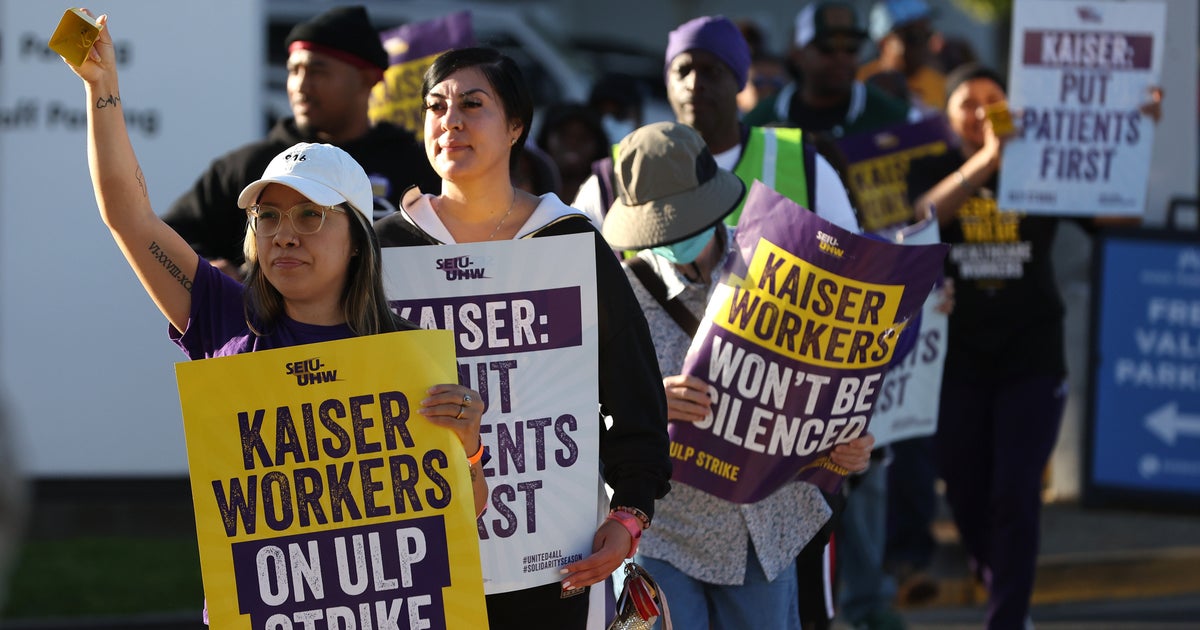Writers, actors, nurses, auto workers, baristas, pharmacists, graduate students — ever since 2023’s “hot labor summer” began, it seems like workers all over the country have been walking off the job to demand more of their bosses. But are we really seeing a resurgence of the strike weapon?
By several measures, yes, we are. More U.S. workers are going on strike now than have in years, and many are winning big raises and other gains from their employers, which helps fuel strikes elsewhere. But the numbers need to be put in the broader context of a long-term decline in U.S. work stoppages following decades of de-unionization.
One eye-popping statistic making the rounds suggests workers are striking in levels not seen in decades: the number of “days idle” due to work stoppages. That figure accounts for both how many workers have gone on strike and for how long.
Through September, there were 11.2 million lost days of work due to strikes involving at least a thousand workers, according to the Bureau of Labor Statistics. Even with three months to go, that is the most lost days of work in a single year since 2000.
But the bulk of 2023’s strike days — roughly 80% — come courtesy of the SAG-AFTRA strike in Hollywood, which is both huge (involving 160,000 actors) and long-running (now at more than three months).
Still, even excluding this one massive work stoppage, there have been more strike days already in 2023 than any year since 2018 and 2019, when public-school teachers were walking off the job in massive numbers. This year’s lost work days are also already greater than most years going back to the 1990s, according to BLS figures.
“The last time you saw this number of workers on strike was 2018 and 2019, and that was largely driven by red-state teacher strikes.”
– Johnnie Kallas, Ph.D. candidate and project director for Cornell’s Labor Action Tracker
Another, more detailed data set shows a recent surge in strike activity. Unlike the federal government, the Cornell University School of Industrial and Labor Relations has been tracking strikes of all sizes, including those involving just a handful of workers, like those at Starbucks cafes, since 2021.
The school’s data from Jan. 1 through Oct. 11 shows a marked increase in the number of workers involved in strikes: from 47,700 workers during that period in 2021, to 126,800 in 2022, all the way up to 468,500 this year.
The 325 strikes during that period this year is a slight decrease from the 345 last year, but this year’s work stoppages overall are much larger. Along with the actors’ strike, some of the biggest recent strikes include hotel workers in Los Angeles (20,000), health care workers at hospital giant Kaiser Permanente (75,000) and auto workers at Ford, General Motors and Jeep parent company Stellantis (34,000).
Johnnie Kallas, a Ph.D. candidate and project director for Cornell’s Labor Action Tracker, said this “considerable uptick” was particularly notable because of what parts of the economy were affected.
“The last time you saw this number of workers on strike was 2018 and 2019, and that was largely driven by red-state teacher strikes,” Kallas said, alluding to the “Red for Ed” strikes in states like West Virginia and Oklahoma. “The difference here is this is really rooted in the private sector and certain industries. That’s certainly a major change we’ve seen this year compared to the last several years.”
The Cornell data is valuable not only because it’s more expansive than that of the Bureau of Labor Statistics, but because it also includes more details on each strike, including workers’ stated demands. Last year’s strikes were driven predominantly by — no surprise — pay. But many also stemmed from health and safety concerns as well as a frustration with staffing levels, according to Cornell’s annual report.

Irfan Khan via Getty Images
Margaret Poydock, a senior policy analyst at the Economic Policy Institute think tank, said striking workers are buoyed right now by a persistently tight labor market that gives them more leverage at the bargaining table. She also said public support for unions and strikers is giving workers more confidence to walk out and demand more.
“It’s easier for workers to go on strike when there’s low unemployment,” Poydock said. “And [right now] there’s solidarity from the public.”
The public’s approval of unions has generally been rising over the past decade and now sits at 67%, and an increasing share of people tend to believe that unions are good for the economy, according to Gallup. Those findings dovetail with other recent surveys showing that consumers largely back strikers right now.
One recent poll from The Associated Press and the NORC Center for Public Affairs Research found that just 9% of respondents supported the auto companies over the workers. Another poll showed even more lopsided backing for the writers and actors on strike in Hollywood.
“Even just the threat of strikes shows to be powerful as seen by the Teamsters this summer,” Poydock said, alluding to the union’s contract fight at shipping giant UPS, which resulted in sizable raises but no strike.
But Poydock noted that current strike levels aren’t anywhere close to what they were in the 1960s and 1970s. Back then it was not uncommon for more than 2 million workers to go on strike in a single year. But only four of the past 10 years have seen more than 100,000 go on strike, according to the BLS data.
“Even just the threat of strikes shows to be powerful as seen by the Teamsters this summer.”
– Margaret Poydock, Economic Policy Institute
The overall decline in strikes has mirrored a long-term drop in union density in the U.S. Roughly a third of workers belonged to unions in the peak years following World War II, but the BLS data suggests now only 1 in 10 is a union member.
Most strikes involve unionized workers because unions provide the organizational structure needed to plan and execute one, including a strike fund that can at least partially replace workers’ lost wages. In the most common scenario, unionized workers declare a strike when their most recent contract has expired and they haven’t reached a satisfactory deal on a new one. (These days most contracts have a no-strike clause barring work stoppages while the contract is in effect.)
Strikes can be risky propositions even for workers with union protections. Although employers can’t legally fire strikers in most situations, they generally do have a right to “permanently replace” workers when they are striking for economic reasons. And for many public-sector workers, strikes are illegal, so they might risk their livelihoods by striking without adequate public and political support.
Poydock said all of these factors have contributed to the long-term decline of strikes. Putting more workers back in unions would not only make the strike weapon more potent, she said, but it would make for a fairer economy.
“The decline of unionization has caused a growth in inequality,” she said. “Unions are a tool to help rebalance a power that’s kind of lopsided right now.”

